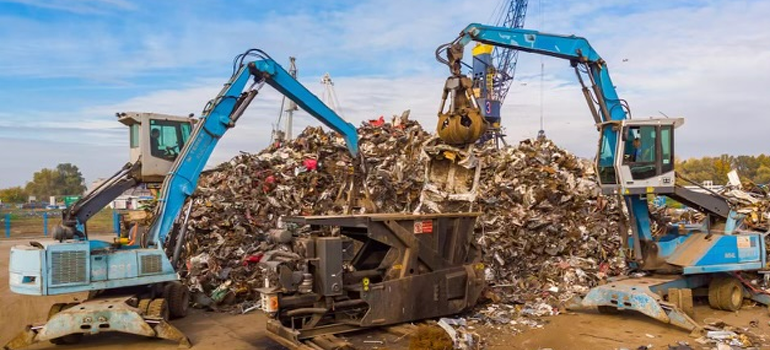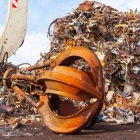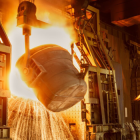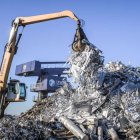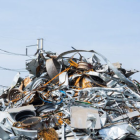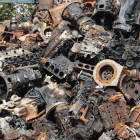Scrap metal recycling is a booming industry that offers both economic and environmental benefits. If you’re new to the world of scrap metal, it might seem intimidating at first. But once you understand the basics—types of scrap, sorting methods, and where to sell it—you’ll see just how easy and profitable it can be. Whether you’re cleaning out your garage, working in construction, or just curious about how scrap metal recycling works, this guide will walk you through everything you need to know to get started.
The Different Types of Scrap Metal
Not all scrap metal is created equal. Understanding the difference between ferrous and non-ferrous metals is crucial for maximizing your profits. Here’s a breakdown:
-
- Ferrous Metals: These contain iron and are magnetic. Steel and cast iron are examples. They’re generally cheaper than non-ferrous metals but still valuable.
- Non-ferrous Metals: These metals, like aluminum, copper, and brass, do not contain iron and are more valuable because they are rarer and easier to recycle. Copper, for example, is in high demand for electrical wiring.
Where to Find Scrap Metal
Finding scrap metal isn’t as hard as it may seem. Common sources include household items, construction sites, or even businesses that regularly discard old equipment. Here are some places to start looking for scrap metal:
-
- Household Items: Old appliances, car parts, furniture, and tools can all be sources of scrap metal. Washing machines, refrigerators, and microwaves often contain valuable metals like copper and steel.
- Construction Sites: Builders and contractors often have leftover metal from projects, such as steel beams, pipes, and cables.
- Automotive Parts: Old cars and motorcycles are a goldmine for scrap metal, especially when it comes to aluminum, copper, and steel components.
- Demolition Projects: When buildings are torn down, large amounts of scrap metal, like steel beams, iron rods, and copper wiring, are often left behind.
How to Sort and Clean Scrap Metal
Sorting scrap metal can increase its value when sold to recycling centers. Clean metal is more valuable than metal contaminated with dirt, oil, or other materials. Here’s how to sort and clean your metal scrap:
-
- Separate Ferrous and Non-ferrous Metals: As mentioned earlier, ferrous metals (steel, iron) are usually less valuable than non-ferrous metals (copper, aluminum). Separate these metals for better pricing.
- Remove Non-Metal Parts: Many scrap items, such as appliances or old cars, may contain plastic, rubber, or wood. Remove these non-metal parts to ensure that you’re only recycling metal.
- Clean Metals: When possible, clean the metal to remove rust, dirt, or paint. For example, copper wires should be stripped of any insulation to get a higher price.
How Much Is Scrap Metal Worth?
The price of scrap metal fluctuates based on market demand, the type of metal, and the quality of the material. Here are some general estimates:
-
- Copper: Copper is one of the highest-paying scrap metals due to its demand in electrical wiring and plumbing. Clean copper can fetch up to $3-5 per pound, depending on the market.
- Aluminum: Aluminum, commonly found in cans, windows, and cars, typically pays around $0.80 to $1.50 per pound.
- Steel: Steel is one of the most abundant metals, and while its price is lower than copper or aluminum, it still holds value. Steel scrap can be sold for around $0.10 to $0.30 per pound.
- Brass: Brass, found in fixtures, plumbing parts, and decorative items, often sells for between $1.50 and $3.00 per pound.
Where to Sell Scrap Metal
Once you’ve gathered and sorted your scrap metal, it’s time to sell it. The best place to sell your scrap depends on the type and quantity of metal you have. Here are some options:
-
- Scrap Yards: These are the most common places to sell scrap metal. Local scrap yards buy both ferrous and non-ferrous metals and often offer competitive prices. Make sure to call ahead and inquire about their rates and any additional requirements.
- Recycling Centers: Some recycling centers specifically handle metals and offer better rates than general scrap yards.
- Online Platforms: Websites like Craigslist, Facebook Marketplace, or eBay can be used to sell larger quantities of scrap metal directly to buyers who might be willing to pay a premium.
- Automobile Salvage Yards: If you have an old car or car parts to sell, salvage yards are a great option. They buy everything from entire vehicles to individual metal parts.
The Environmental Impact of Scrap Metal Recycling
Scrap metal recycling is not just a profitable endeavor; it also has a significant positive impact on the environment. Here’s why recycling scrap metal is so important:
-
- Reduces the Need for Mining: Recycling metals means less mining for new raw materials, which is energy-intensive and harmful to the environment. By recycling metal, we reduce the environmental damage caused by mining activities.
- Conserves Natural Resources: Metals like aluminum and copper are finite resources. Recycling these metals ensures that we conserve these valuable materials for future generations.
- Saves Energy: Recycling metal saves a significant amount of energy compared to producing new metal from raw materials. For example, recycling aluminum saves up to 95% of the energy required to produce new aluminum from bauxite ore.
Conclusion:
Scrap metal recycling is an easy and profitable way to make extra money while contributing to a greener planet. By understanding the types of scrap, sorting it properly, and knowing where to sell it, you can maximize the value of your materials. Whether you’re cleaning out your garage, working on a construction project, or just starting your journey into scrap metal recycling, this industry offers a wealth of opportunities for both individuals and businesses. Keep in mind that every piece of metal you recycle is a small but important step toward reducing waste and conserving natural resources.

